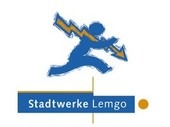Model-based dimensioning of components
Simulations are used to make the path to production-ready hardware as efficient and effective as possible (e.g. reduction of development and manufacturing costs due to short development times and reduced scrap). These recognise possible dangers in the context of hardware production and help the manufacturer to correct the errors. The chances of success increase the better the simulation program and the more realistic the components can be described. This is where the research at iFE comes in: On the one hand, work is being done to achieve further approaches of the simulative components to reality. On the other hand, the entire hardware structure is considered as a whole and simulatively examined for EMC emissions and efficiency.
The development of power electronics for battery or hybrid electric vehicles plays an essential role in the context of such vehicles with regard to the overall efficiency. Here it is particularly important to adapt the specifications of the DC concepts to the respective boundary conditions. We use model-based approaches and optimisation methods to investigate the respective properties of hybrid and battery-electric vehicles and to develop a primary energy-saving operation. An example of this is a transmission of a hybrid electric vehicle: based on specified specifications - such as the transmission ratios to be realized, the weight, the overall dimensions or the maximum power losses - the number of gear stages, clutches and their arrangement must be an efficient configuration. This may Very labor-intensive and time-consuming processes can be simplified in part by using optimization processes.








































































